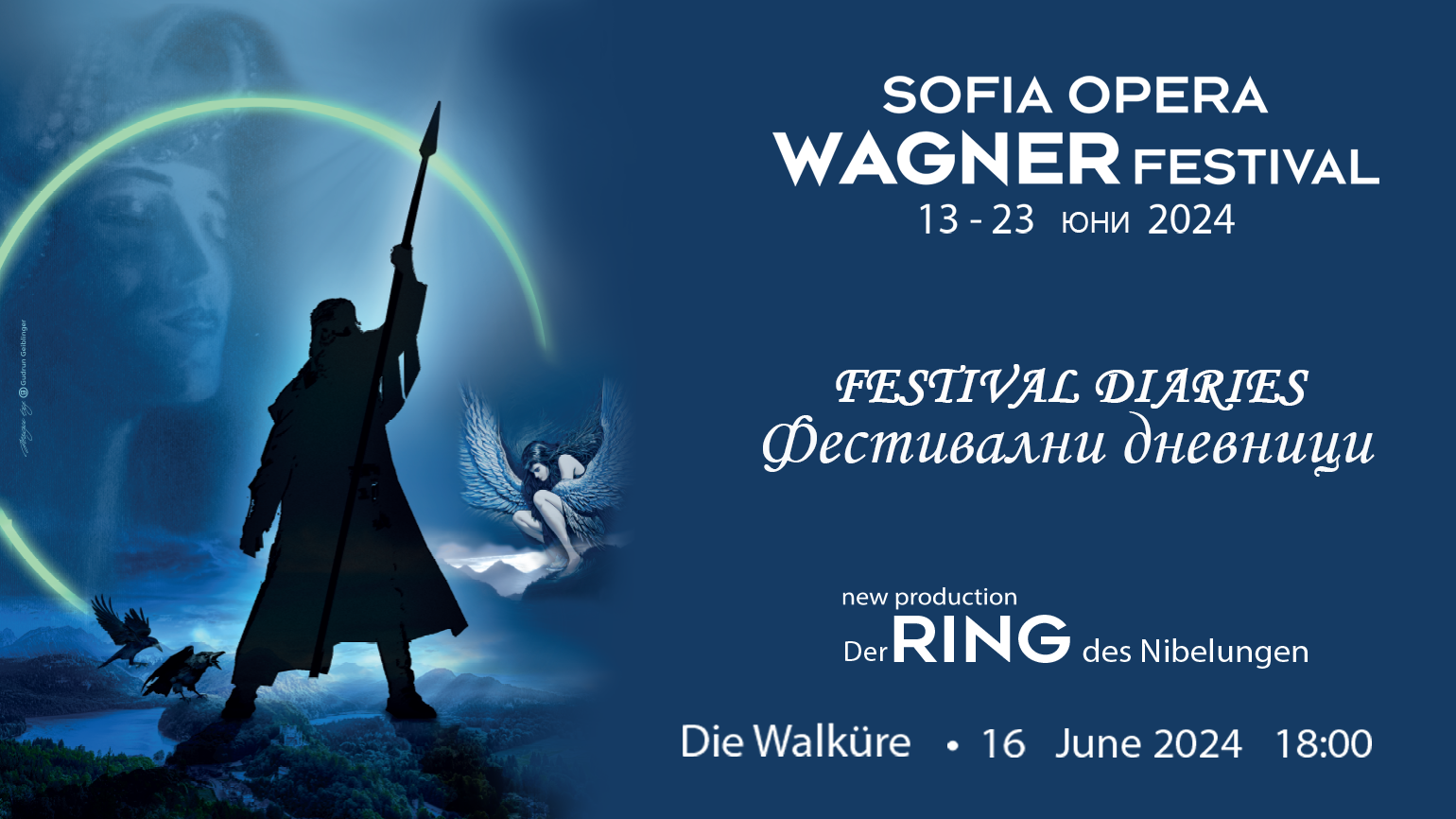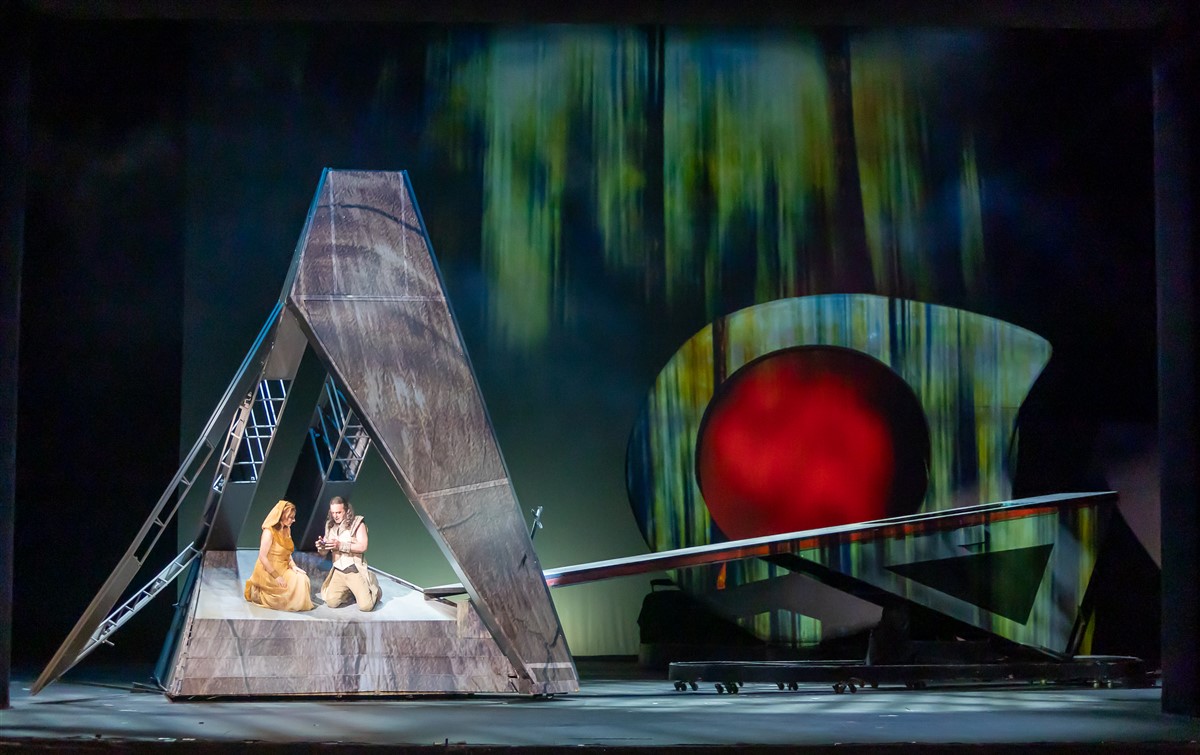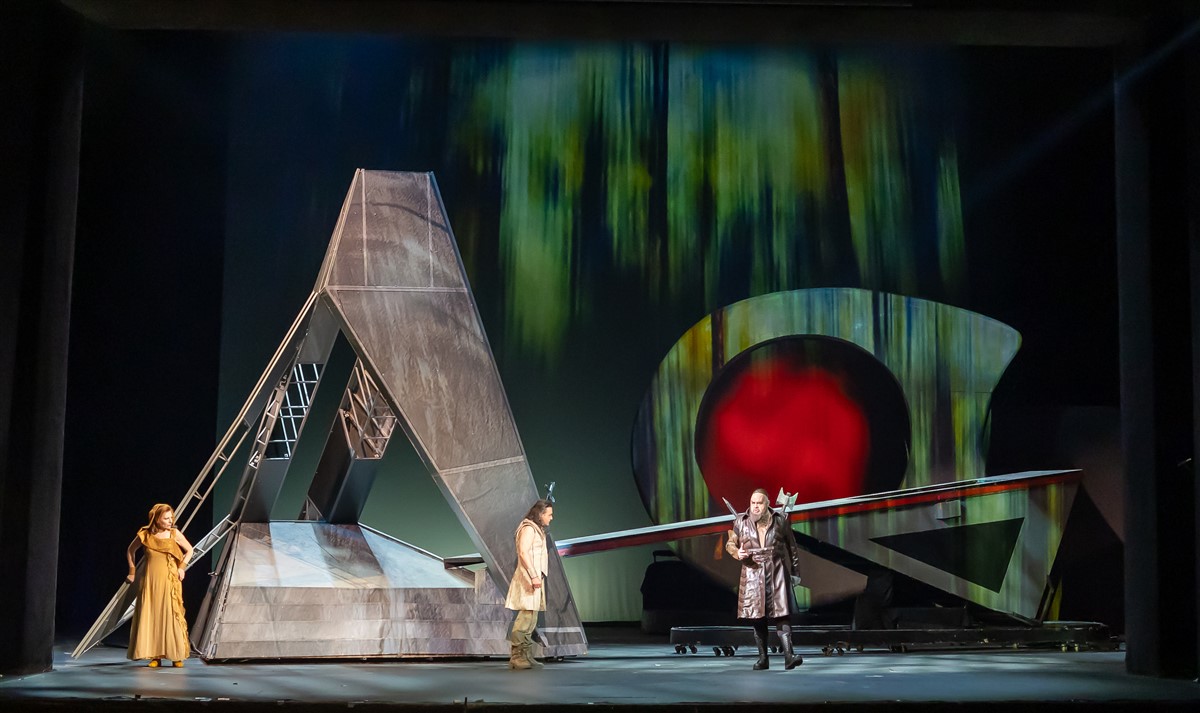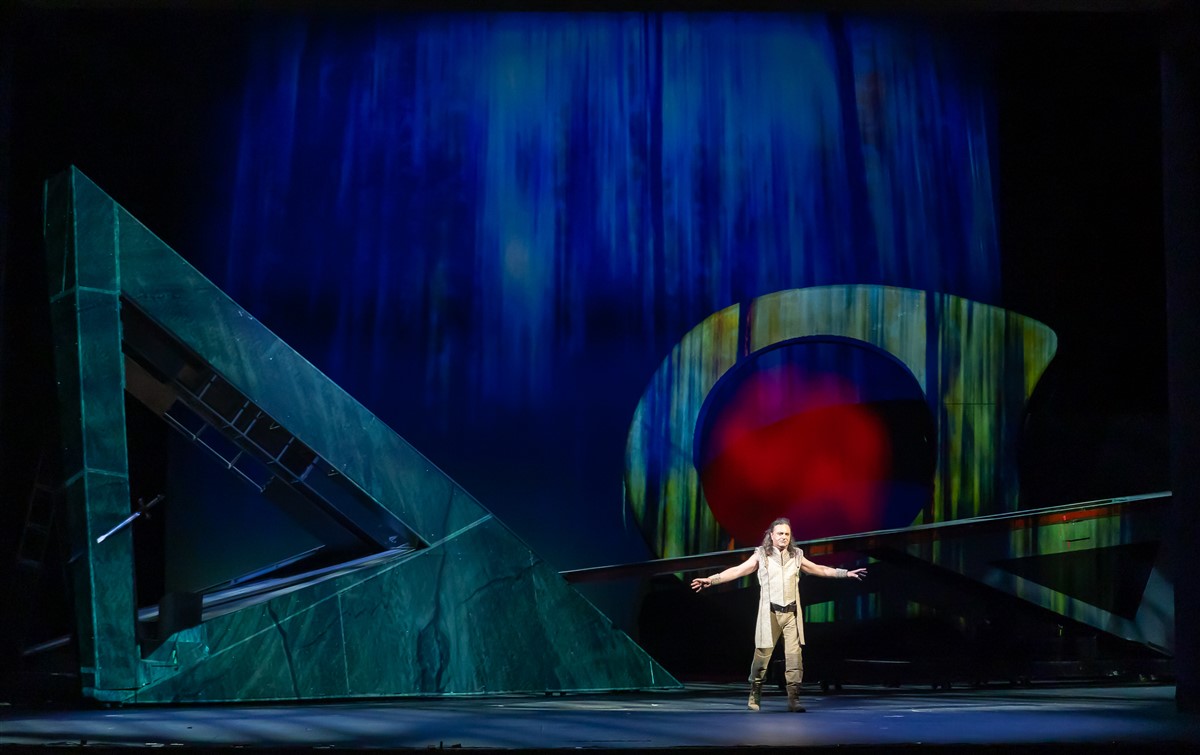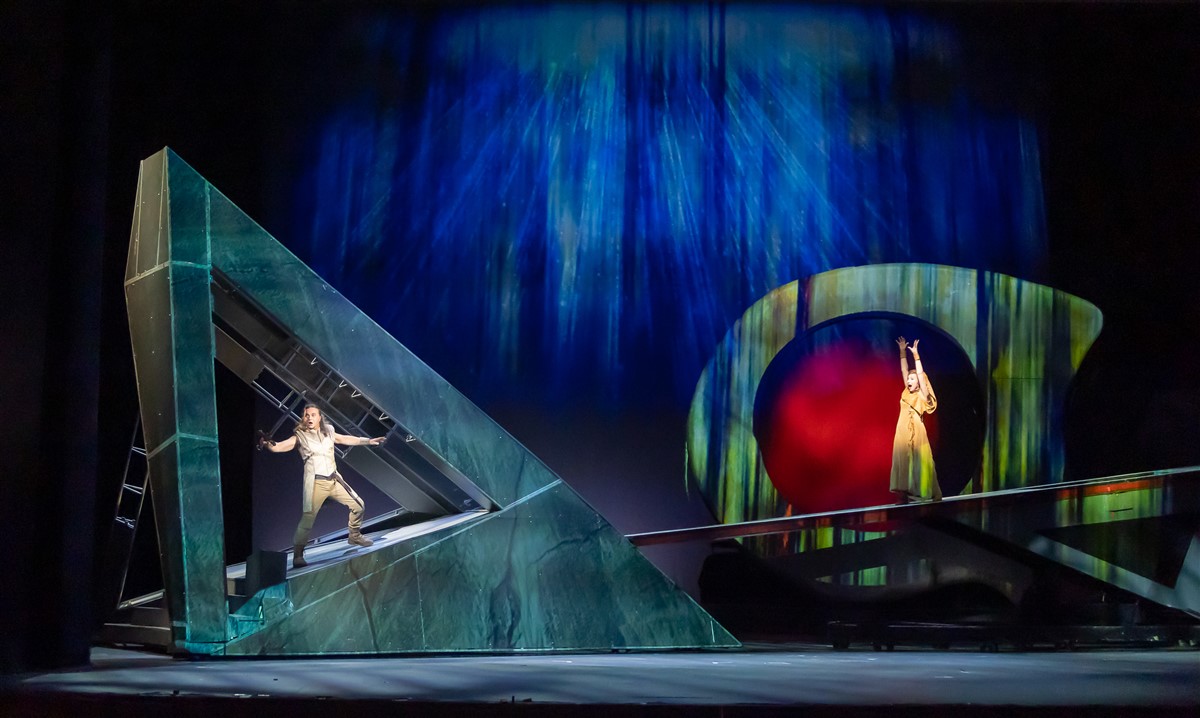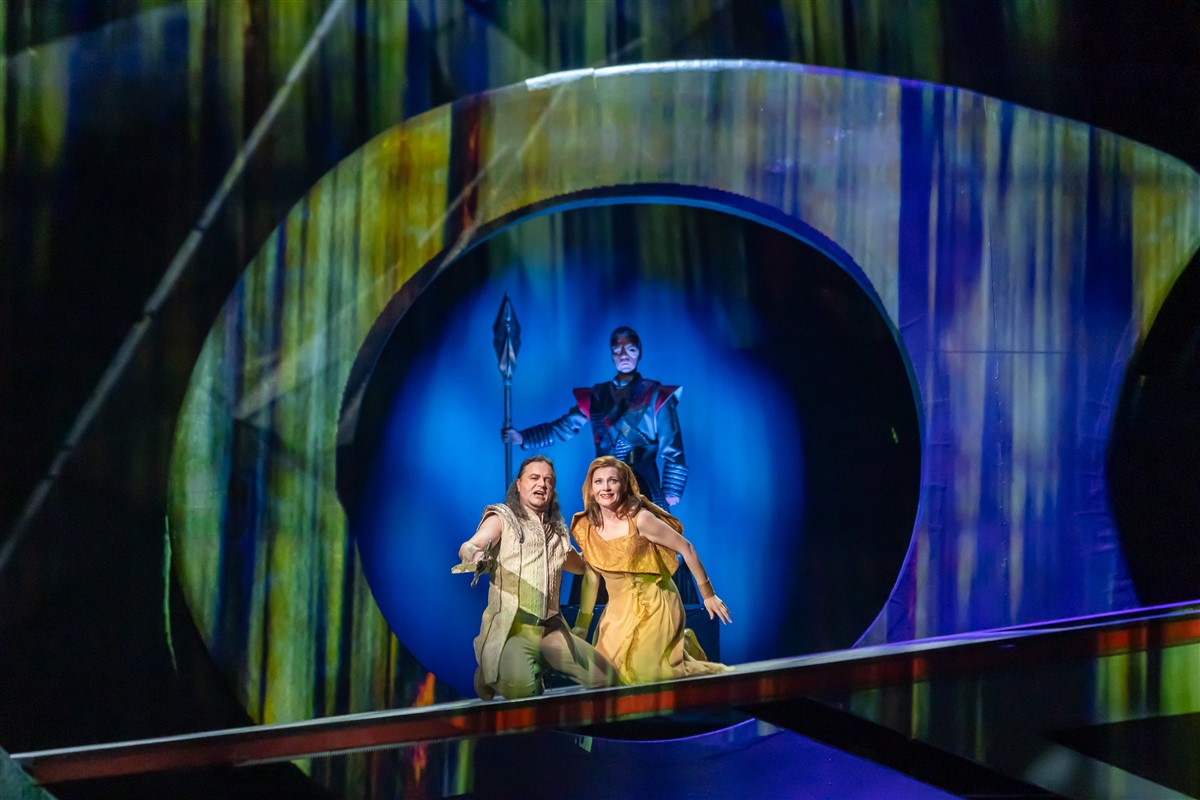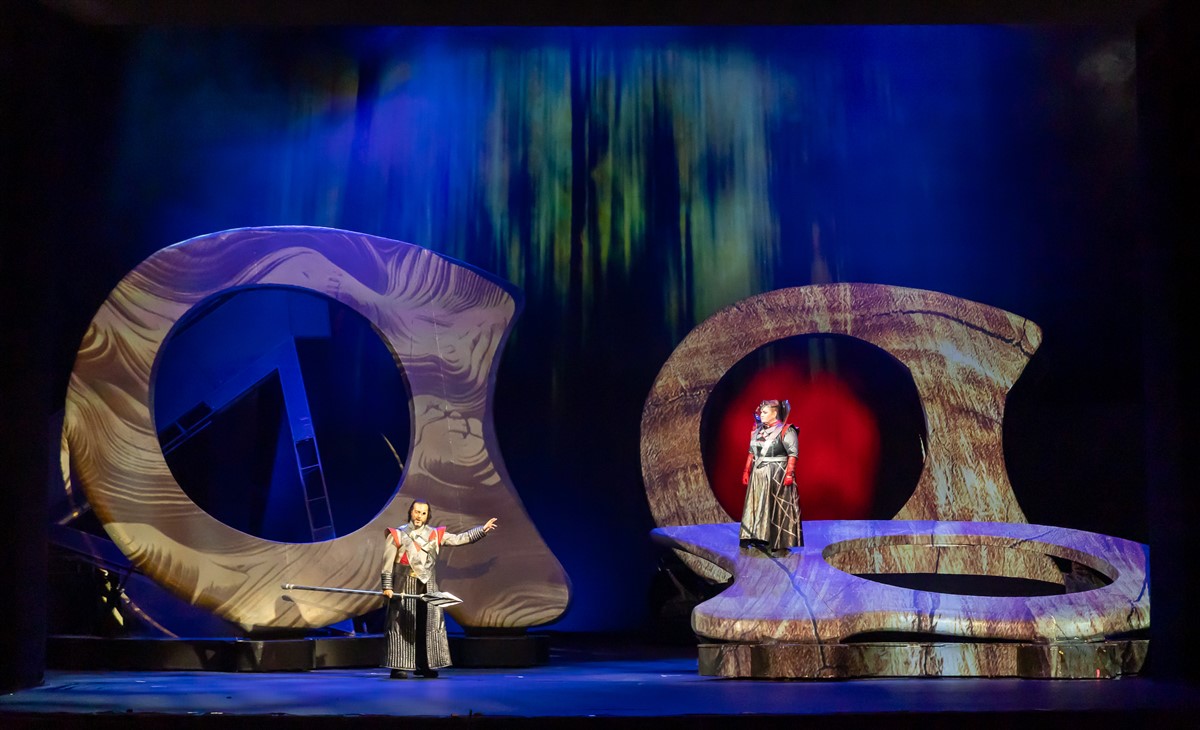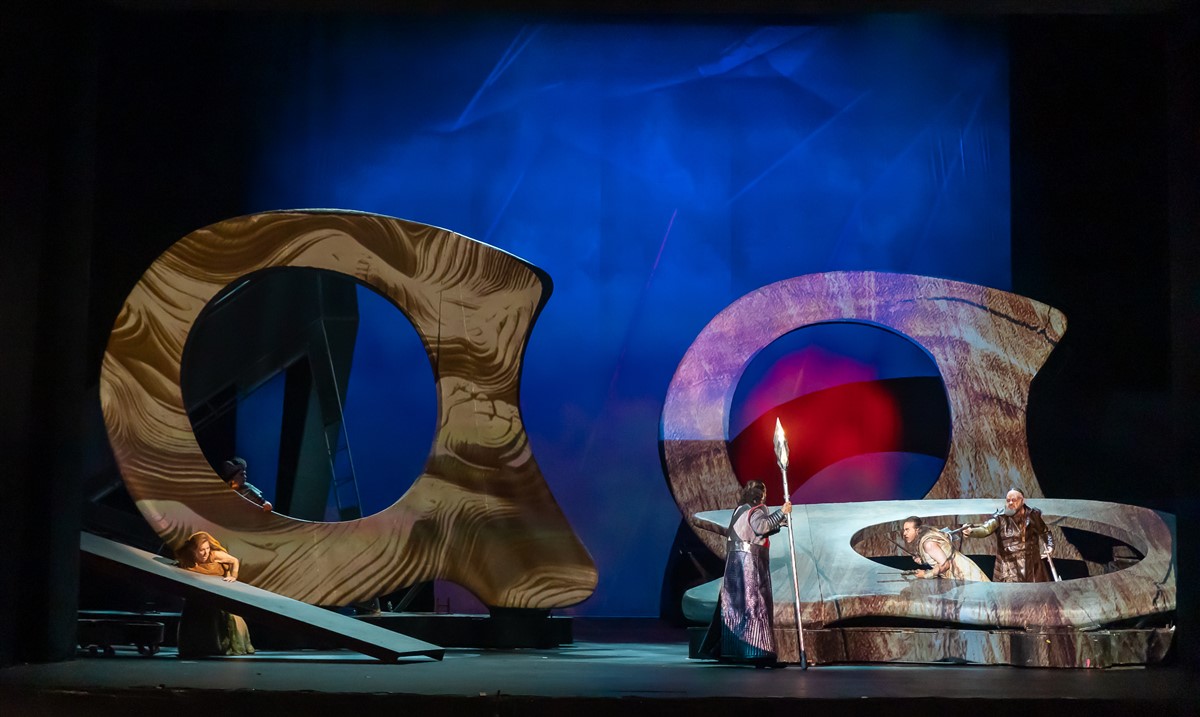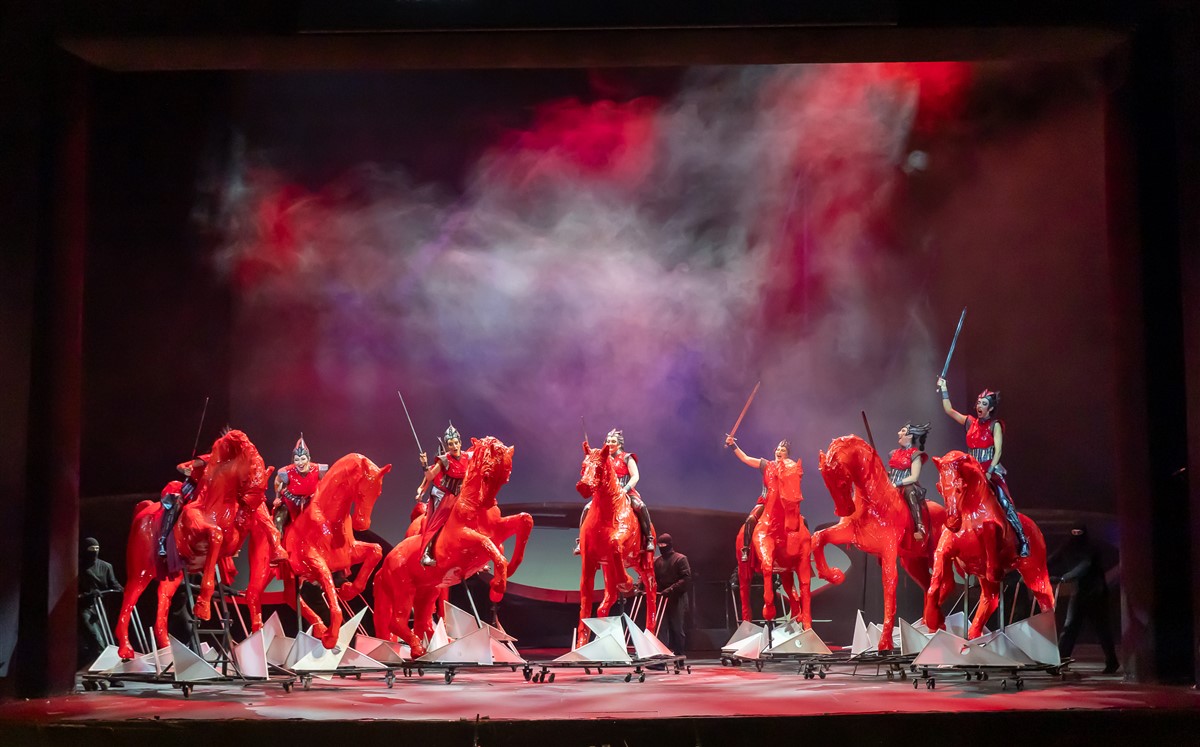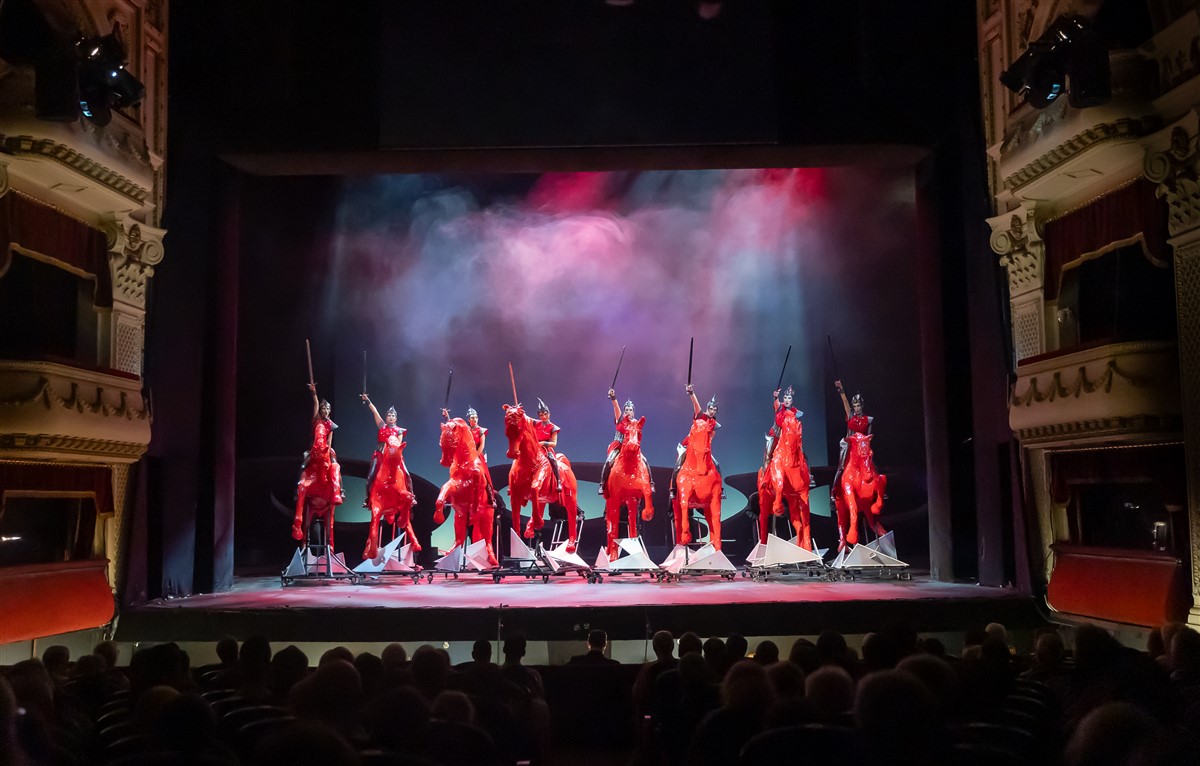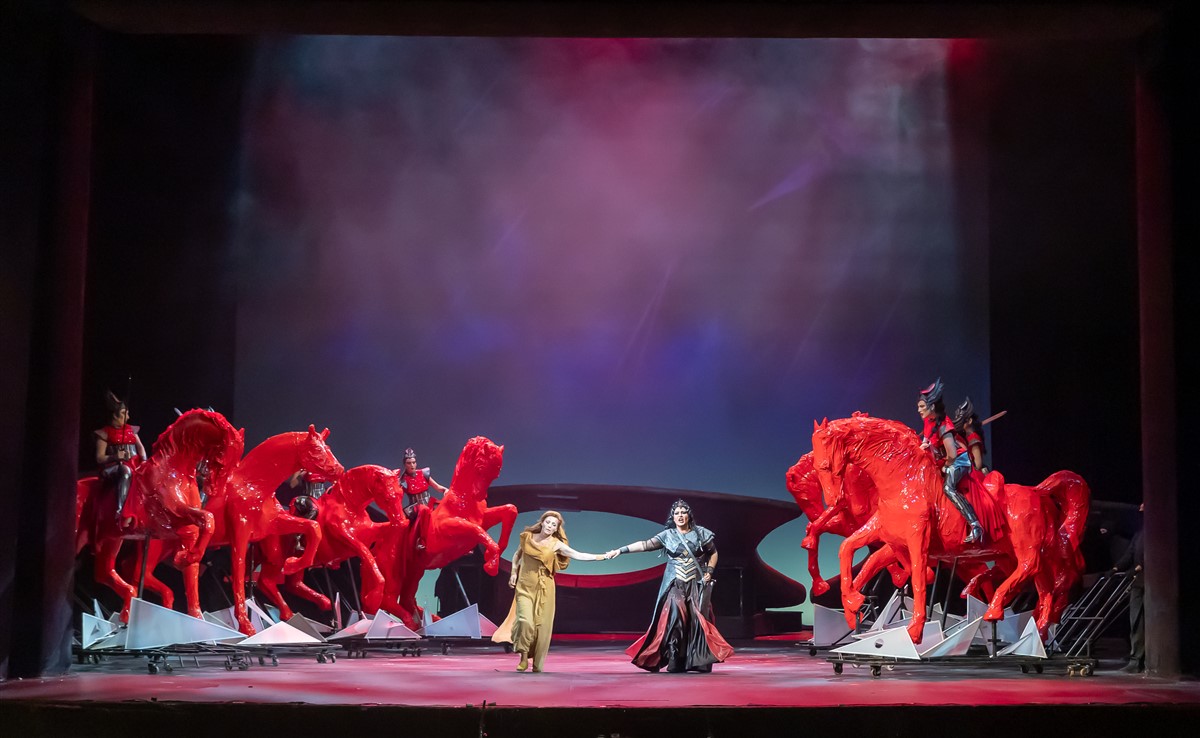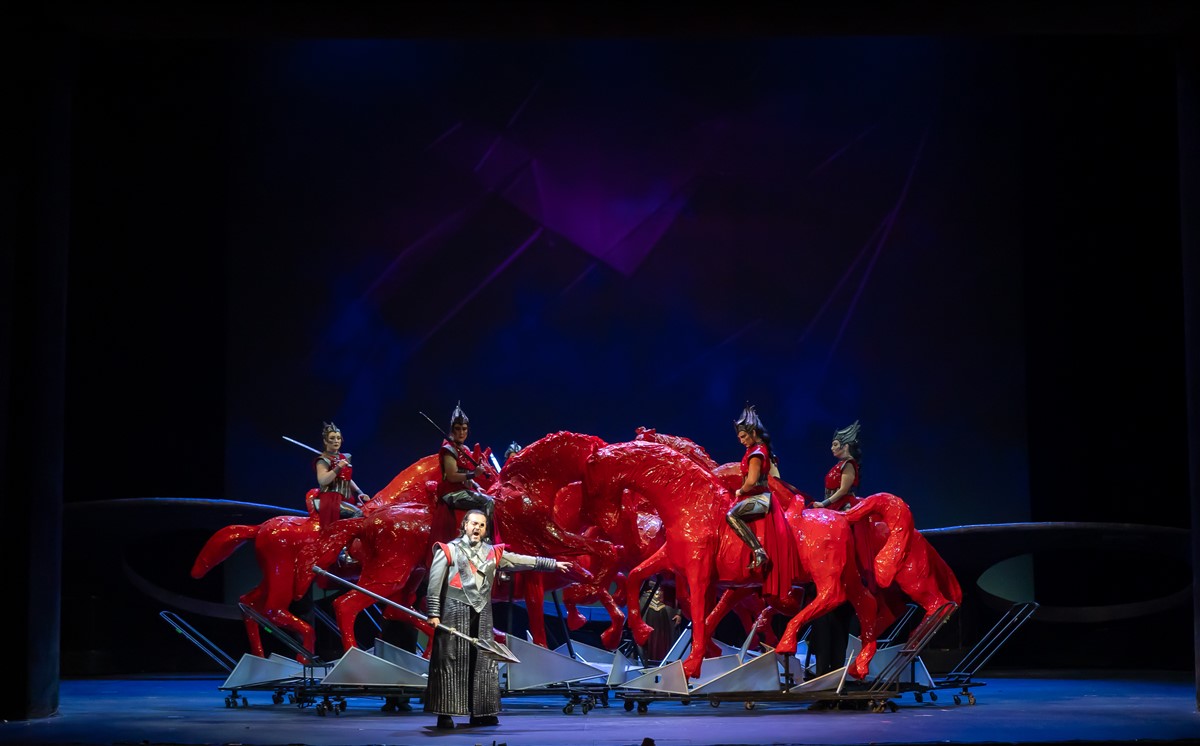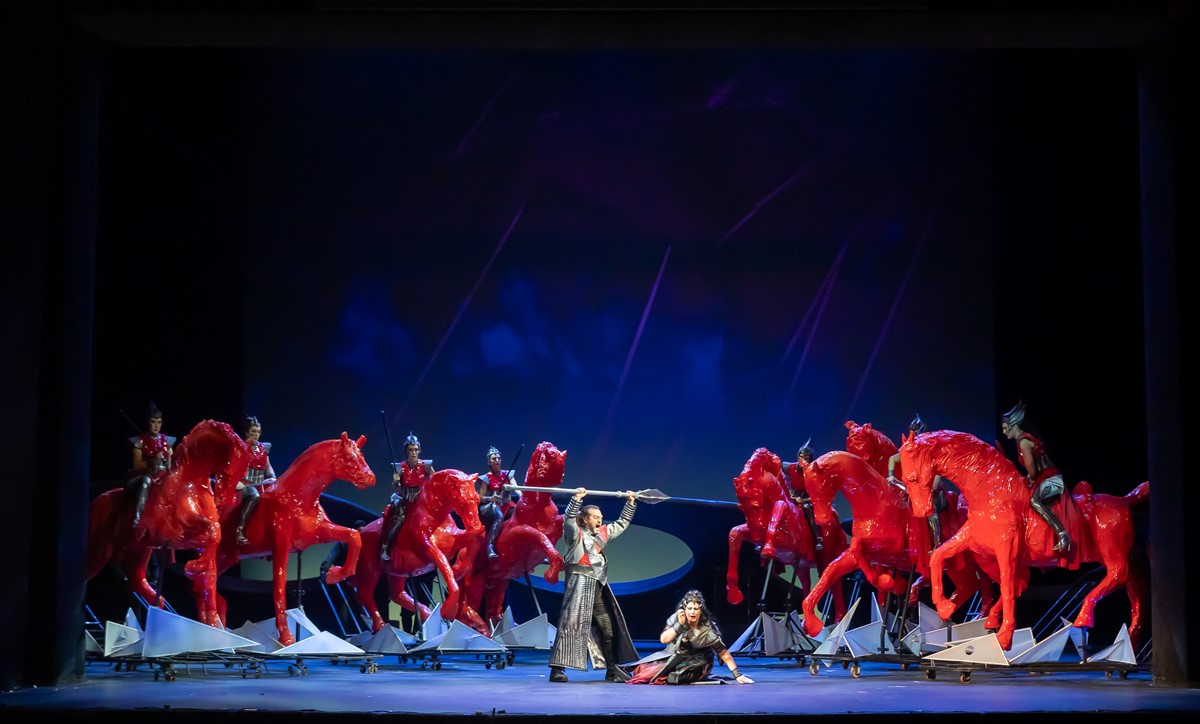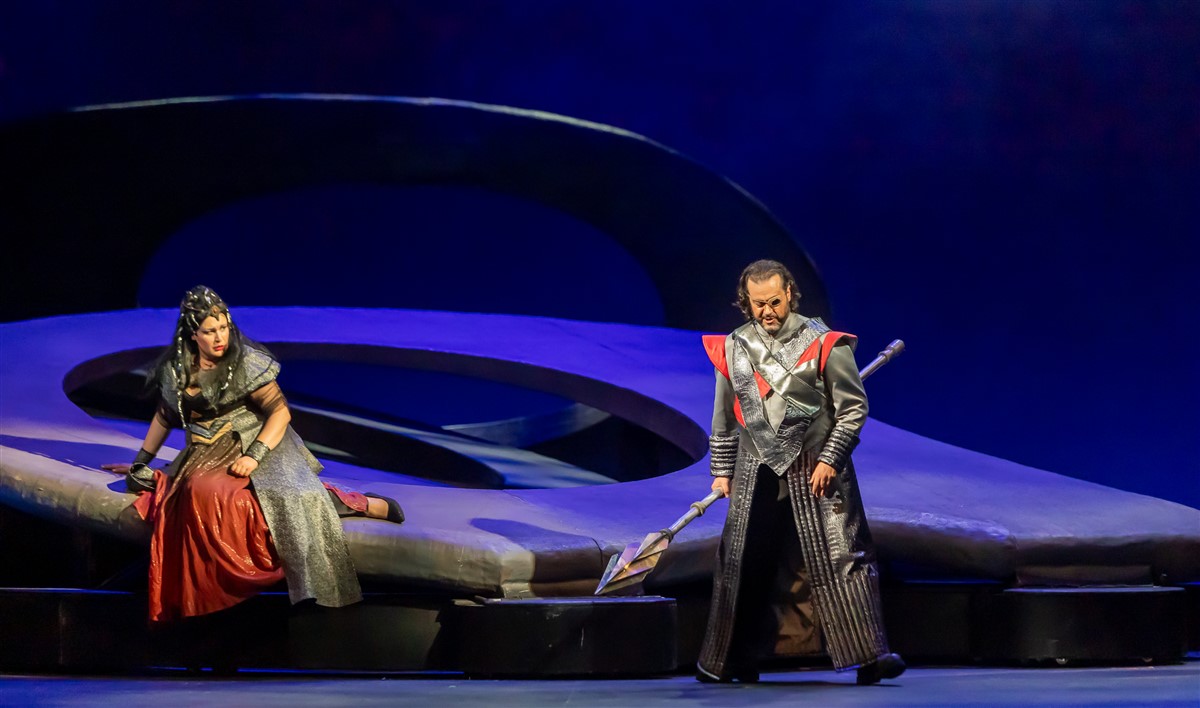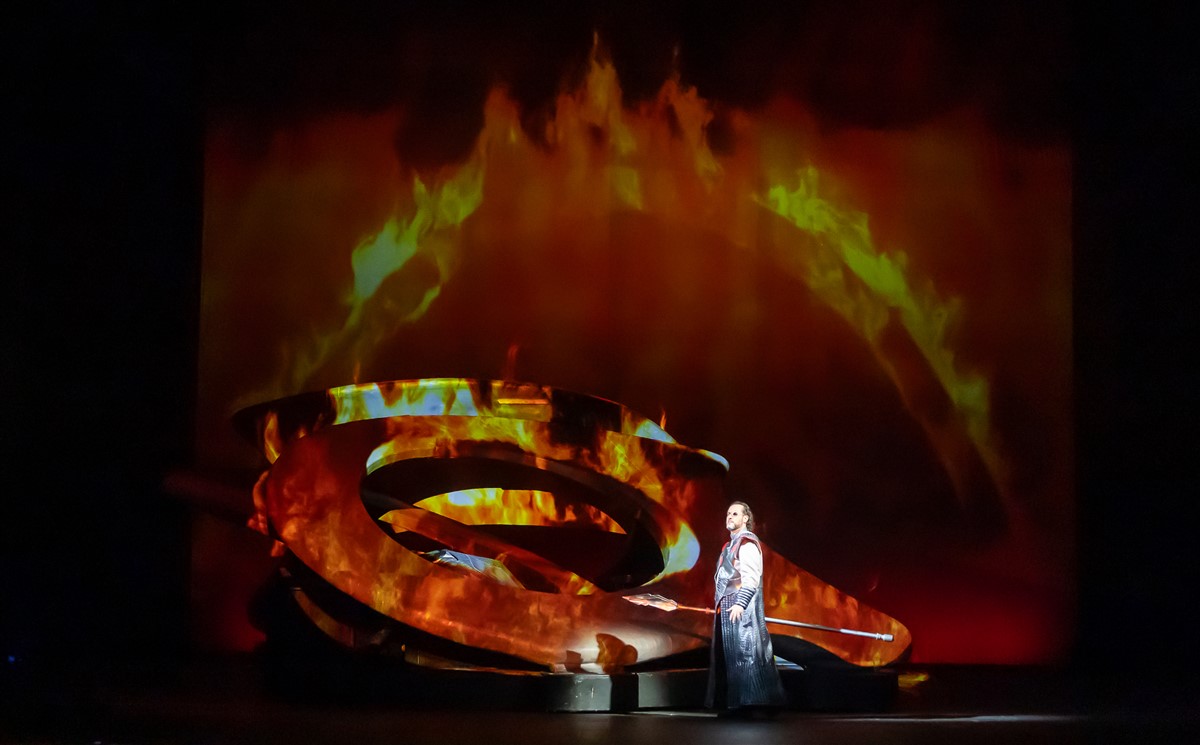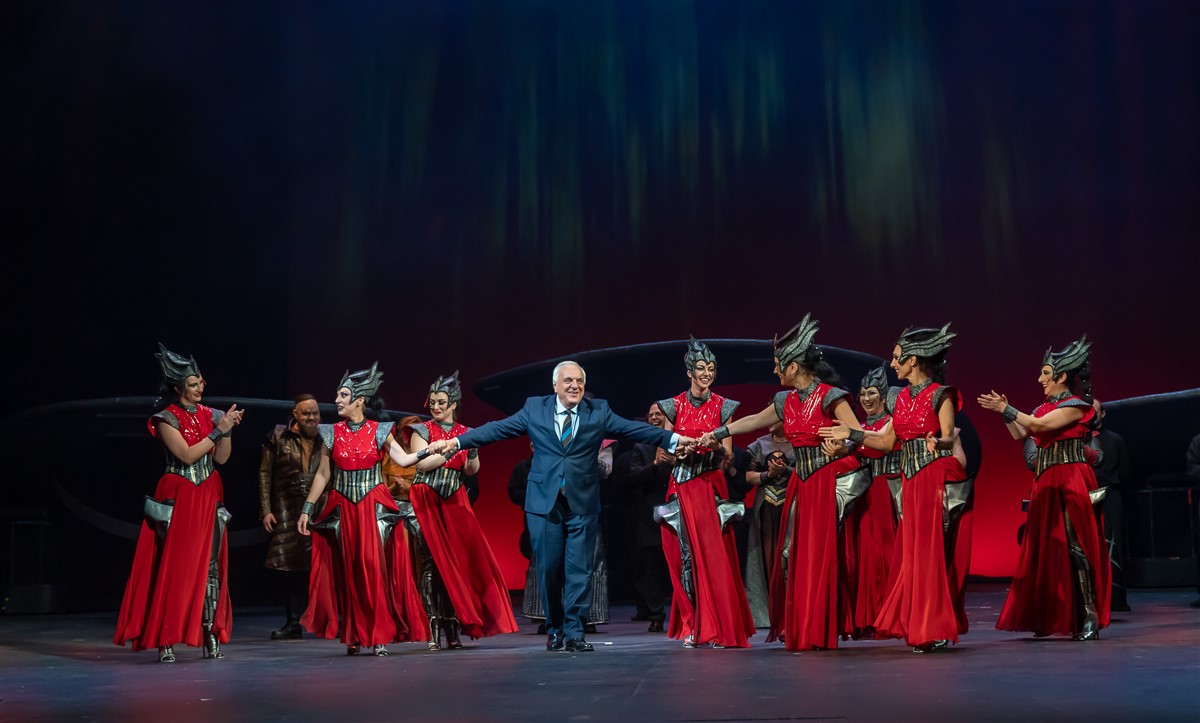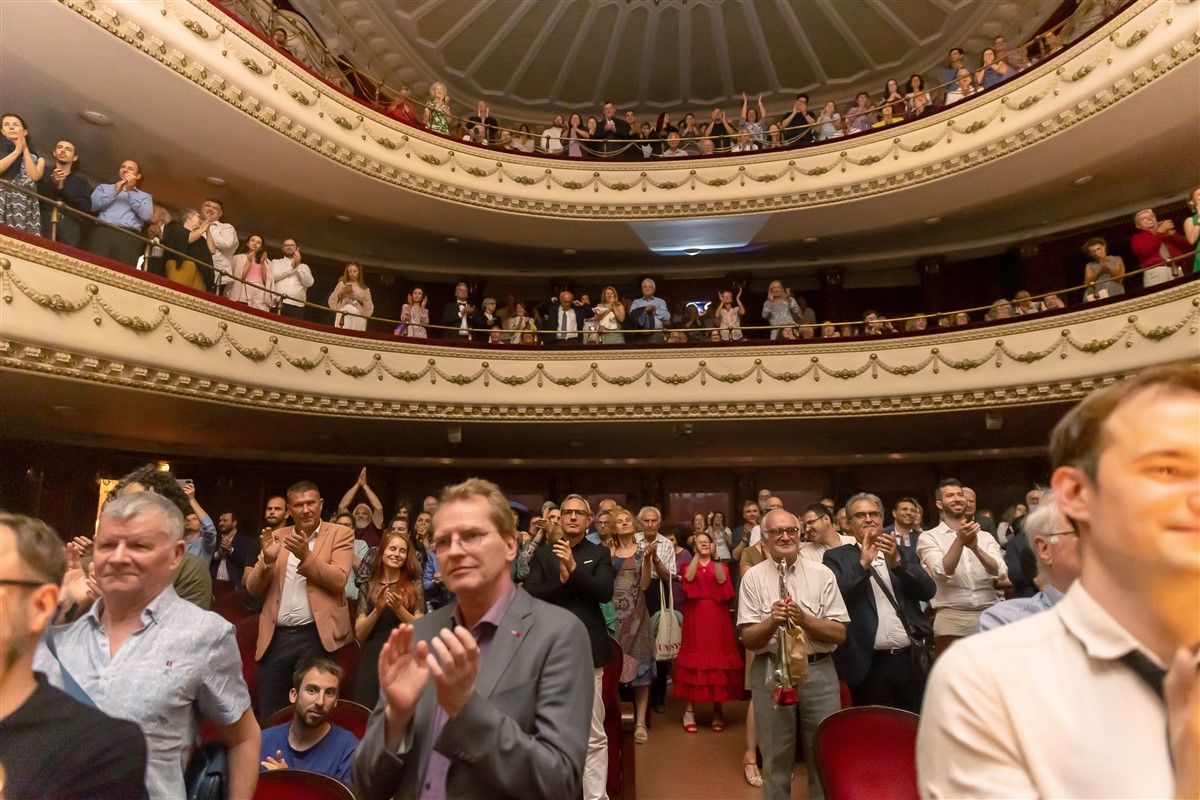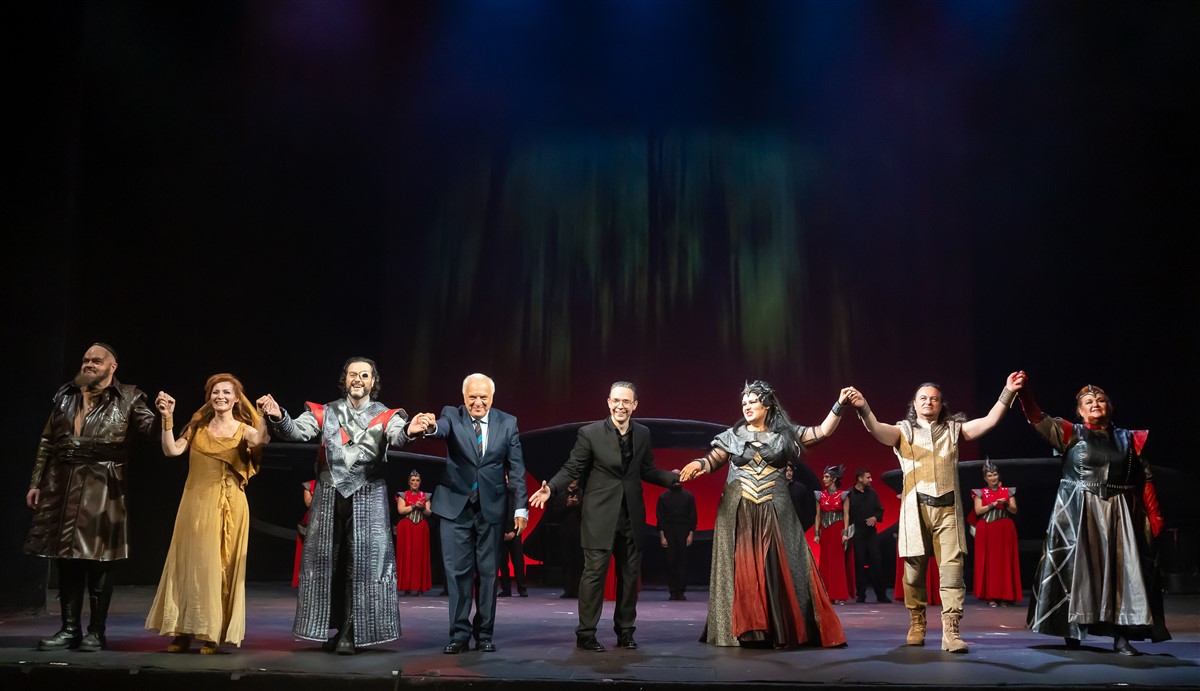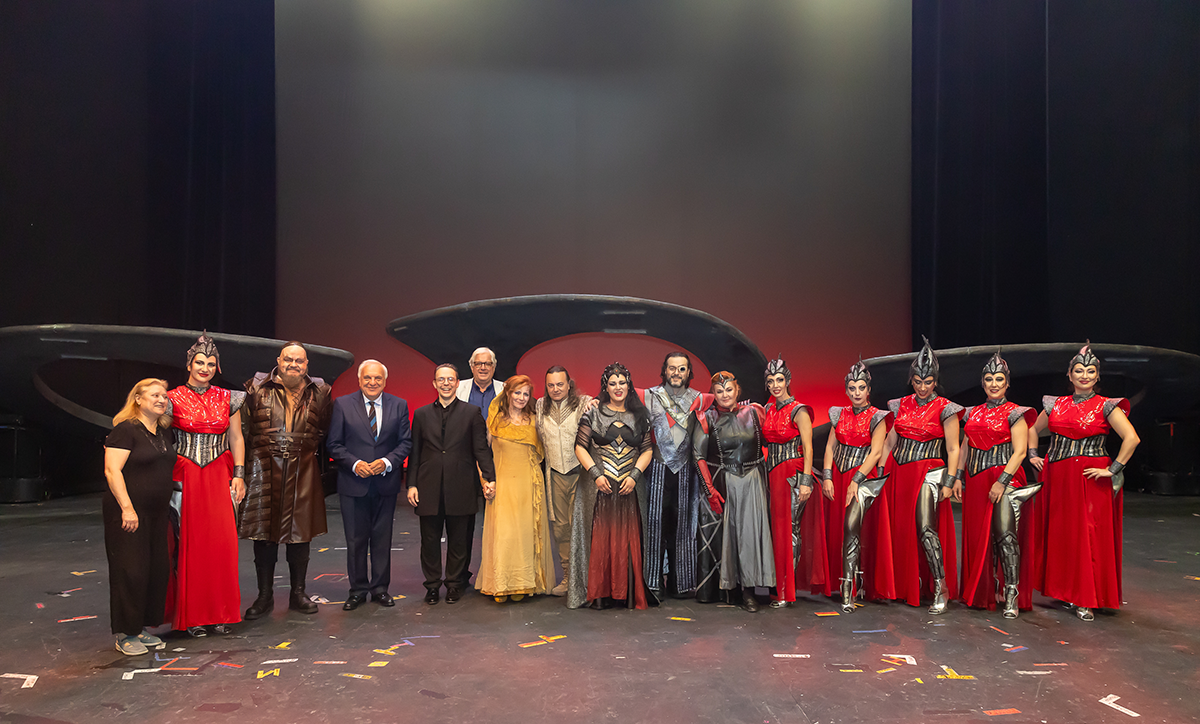„Die Walküre“ set the audience on fire
For the third time in a row, festive fanfares heralded the start of the Wagner evening at the Sofia Opera. Everybody was impatiently waiting to see „Die Walküre“.
Just a month ago, this performance left the audience in Skopje in awe while the beginning of the opera season in October the previous year was marked with the huge success at the Festival theater in Füssen where „Die Walküre“ was shown as well.
Wagnerians from Portugal were present in the hall again as well as special guests from Scotland, Brazil, USA and Croatia, music critics and journalists from foreign media.
„Die Walküre“ is Plamen Kartaloff’s masterpiece: a true creation of beauty, an expression of Kartalff’s love towards art and creating it. The director’s decisions present the story as if it’s shown in a movie theater and bring it to life while paying attention to the tiniest of details.
The enormous energy on stage spread throughout the entire hall and the magical feeling overcame the audience, from the first to the last row. A storm of passion and emotions exalted the viewers: an incredible spiritual ecstasy. The famous “Ride of the Valkyries” drew a huge admiration from the audience while the red horses were masterfully managed by specially prepared ballet dancers under the choreography of Riolina Topalova.
The orchestra and the conductor Evan-Alexis Christ were passionately applauded. They showed incredible mastery of their craft and were fully devoted to the performance. Orchestra and conductor formed a whole with the exceptional performance by lead singers Aris Argiris (Wotan), Tsvetana Bandalovska (Sieglinde), Martin Iliev (Siegmund), Gergana Rusekova (Brunhilde), Bjartni Thor Christinson (Hunding) and the eight Valkyries Stanislava Momekova, Silviya Teneva, Lyubov Metodieva, Ina Petrova, Elena Mehandjiyska, Vessela Yaneva, Tsveta Sarambelieva and Alexandrina Stoyanova-Andreeva.
Scenography was done by Hans Kudlich, costumes: by Hristiyana Zorbalieva, lighting was handled by Andrei Heidinyak and the new multimedia touches crafted by Elena Shopova made the stage look even more beautiful. Assistant-director Yuliya Krasteva’s enormous efforts must also be acknowledged: she was in charge of the long rehearsal process for the entire “Ring”, employing her inherent skill and precision.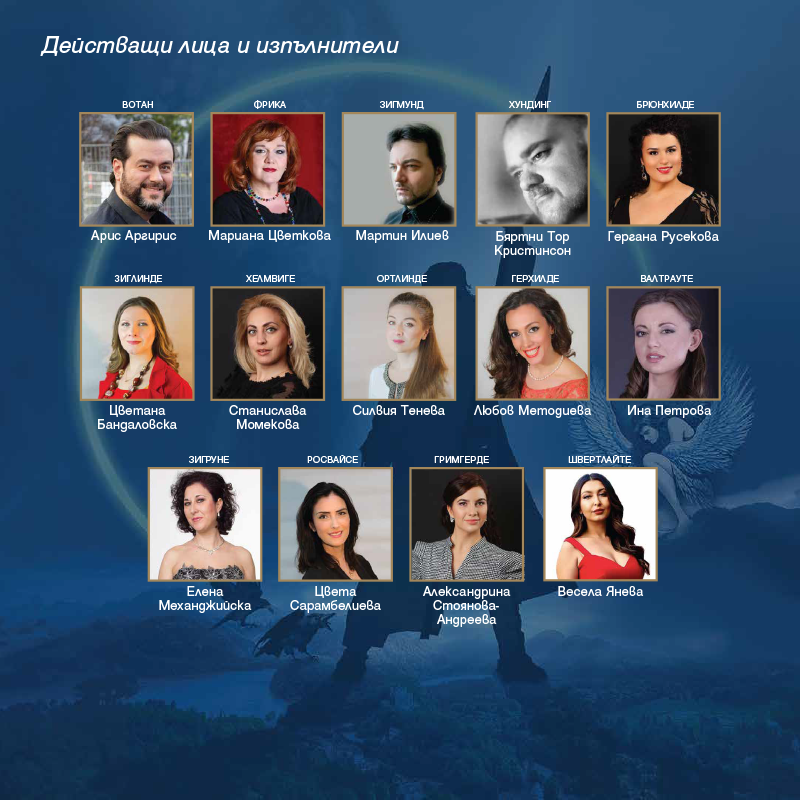
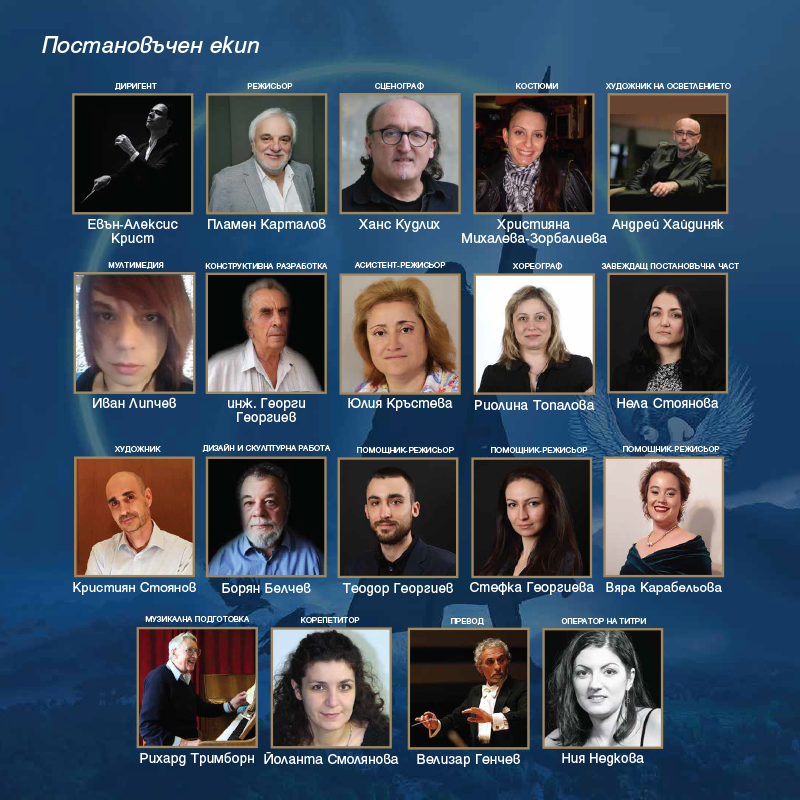
Viewers shared that they had seen many different productions of “Der Ring des Nibelungen” in the biggest theaters around the world but what they had witnessed here was a true miracle and an event of huge significance. Comments on the lead singers were more than flattering: their vocal mastery was praised as well as their command of the German language and their artistic presence on stage. The orchestra and conductor became the audience’s favorites. With great inspiration, the artists spoke of the imagination, inspiration, bravery and daring with which Plamen Kartaloff set „Die Walküre“. With each following showing, „Die Walküre“ draws ever closer to perfection.
The wonderful evening staff, quite skillfully led by Elisaveta Hristova, was in charge of greeting the guests and of their comfort.
The Wagner Festival continues this week with three more performances: “Siegfried” on the 18th of June, “Götterdämmerung“ on the 20th of June and “Lohengrin” on the 23rd of June.
Here are the impressions of our guests after the performance.
Der Ring des Nibelungen
A festive scenic performance to be held within three days and one night
Libretto and music by Richard Wagner
First night: “Das Rheingold”; first day: „Die Walküre“; second day: “Siegfried”; third day: “Götterdämmerung“
“Der Ring des Nibelungen” intertwines complex storylines and ideas. The story of the four-part cycle unfolds on Earth, in the waters of the river Rhein, within the depths of the earth, high in the skies of Valhalla and follows the dealings of men, dwarves and gods. The cycle ends with a catastrophe of cosmic proportions which encompasses the entire Universe.
The story of Wagner’s “Der Ring des Nibelungen” sounds both fantastic and mysterious, just like a thrilling fairytale. Even though the protagonists are much different than your average person, they still experience familiar human emotions such as greed, love, lust etc. Exactly this makes the piece relevant in modern times and makes the story so impactful.
It is known that Wagner didn’t write the tetralogy in chronological order. „Die Walküre“ was written third even though it’s the second opera of the cycle.
The piece’s initial title was “Siegfried and Sieglinde: The Punished Valkyrie” but Wagner quickly shortened it to just „Die Walküre“. He drafted the libretto over the course of two years and wrote the complete libretto during June, 1852. It was published privately in February, 1853 along with the other librettos for “Der Ring”.
While Wagner was writing the script to „Die Walküre“, he was inspired by a series of ancient Scandinavian and German legends, mainly the „Völsunga“ saga, the Poetic Eda, the Prosaic Eda, the Nibelungs and by other fragments of Teutonic literature. He chose certain elements from this abundance of source material and transformed them in order to create a tale of his own through shortening some events, rearranging their chronology and fusing characters together.
Brunhilde isn’t as prominent in the sagas as she is in “Der Ring des Nibelungen”. In early periods, she was written as Gunter’s wife who seeks out Siegfried’s help in order to overcome her superhuman strength. Some aspects of her character on stage appear in the “Edas” and in the Songs of the Nibelungs: for example, Wotan trapping her in a ring of fire and her being rescued by a fearless hero.
After completing the score to “Das Rheingold” in May 1854, Wagner began composing „Die Walküre“ the following month and completed the orchestra score almost two years later, in March 1856. The reason for the creative process taking this long can be explained with several events which happened in Wagner’s life at the time. One of them is Wagner’s blooming friendship with Matilde Wessendonk and the other: his long concert tour in London by invitation from the Royal philharmonic association.
A system of leitmotifs, an inseparable part of operas and dramas, is also used to its full effect in „Die Walküre“. Music experts noticed a total of thirty-six such leitmotifs intertwined within the piece. The well-known motif used to introduce Brunhilde in the second act forms the basis for the famous “Ride of the Valkyries” with which the third act begins. Wagner wrote the concert version of the “Ride” in 1862 to be performed during concerts in Vienna and Leipzig.
King Ludwig II of Bavaria to whom Wagner sold the rights to “Der Ring” insisted that the two finished operas of the cycle be shown on stage. Despite Wagner’s vehement protests, the king ordered their showing at the Munich court opera. “Das Rheingold” was shown on the 22nd of September 1869 and „Die Walküre“: on the 26th of June 1870. The basis for Wagner’s protests was his relationship with the married lady Cosima von Bulow with whom he lived together in Switzerland at the time. The couple couldn’t return to Munich without causing a scandal, thus leaving the composer unable to oversee his own shows.
The premiere of „Die Walküre“ was visited by prominent figures in the world of music such as List, Brahms, Camille Saint-Saëns and violinist Joseph Joachim. Also present were Kaiser Wilhelm II, Pedro II: the emperor of Brazil as well as members of the European royal families. The opera’s reception by the audience and critics was much more positive than it was a year ago regarding “Das Rheingold”. It is known, however, that Cosima hid for a long time the not so positive reviews from her husband, Wagner.
In may 1872, Wagner laid the foundations of the Festival theater in Bayreuth, Northern Bavaria. Initially, he envisioned for the first festival in Bayreuth to be held in 1873 but due to construction and the finishing of the opera cycle having taken longer than expected, the opening date was postponed several times. Finally, the festival opening was set for August 1876 and „Die Walküre“ was shown on the 14th of August, the second day of the festival.
Some curious facts!
The Valkyries as figures in history can be found in the ancient Teutonic military cult. Initially, they were “creepy old women who took part in human sacrifices during which prisoners were robbed of their lives”. Later, the Valkyries were intertwined in a legend: in the Poetic Eda they appear as supernatural maiden warriors carrying out the orders of Odin (Wotan) and are called Skuld, Skogul, Gun, Hild, Gondul and Geirskogul. The names of Wagner’s Valkyries are the composer’s own creation excluding Brunhilde and Siegrune.
The “Song of the Valkyries” is contained within the Islandic saga of “Njáls” (or “Song of Deruda”) which tells of the glorious battle of Klontarf (1014) between the Irish and Scandinavian Vikings. One of the most popular musical themes from „Die Walküre“: “The Ride of the Valkyries”, became widely popular through Francis Ford Copola’s epic movie “Apocalypse Now” (1979).
You can buy tickets for the next shows of the Sofia Opera Wagner Festival here.
